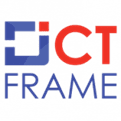MIT has developed a new Probabilistic Programming Language (PPL) called “Picture” for visual scene representation. It is an extension of the Julia, Programming Language developed by Jeff Bezanson, Alan Edelman, Stefan Karpinski, Viral B. Shah that was launched in 2012.
Probabilistic Programming Language is used to describe probabilistic models and to then perform inference on the described models. It is closely related to Bayesian networks and graphical models.
In “Picture,” just around 50 lines of the source codes will be as equivalent to the thousands of lines of codes that conventional systems contain. The picture uses the probabilistic model along with large training datasets in “analysis-by-synthesis” framework to produce high-probability descriptions of captured scenes. It will allow the users (researchers) to create complex generative vision models along with the hierarchical representation of each layer to compare scene hypothesis and automatically solve them for arbitrary 2D and 3D scenes. The use of generative models allows complex scenes to be analyzed more richly and flexible.
“This is the first time that we’re introducing probabilistic programming in the vision area,” says Tejas Kulkarni, an MIT graduate student in brain and cognitive sciences and the first author on the new paper. “The whole hope is to write very flexible models, both generative and discriminative models, as short probabilistic code, and then not to do anything else. General-purpose inference schemes will solve the problems.”
The picture can be used to create programs for 3D human pose estimation, 3D face analysis, 3D object reconstruction, 3D shape programming and more.
